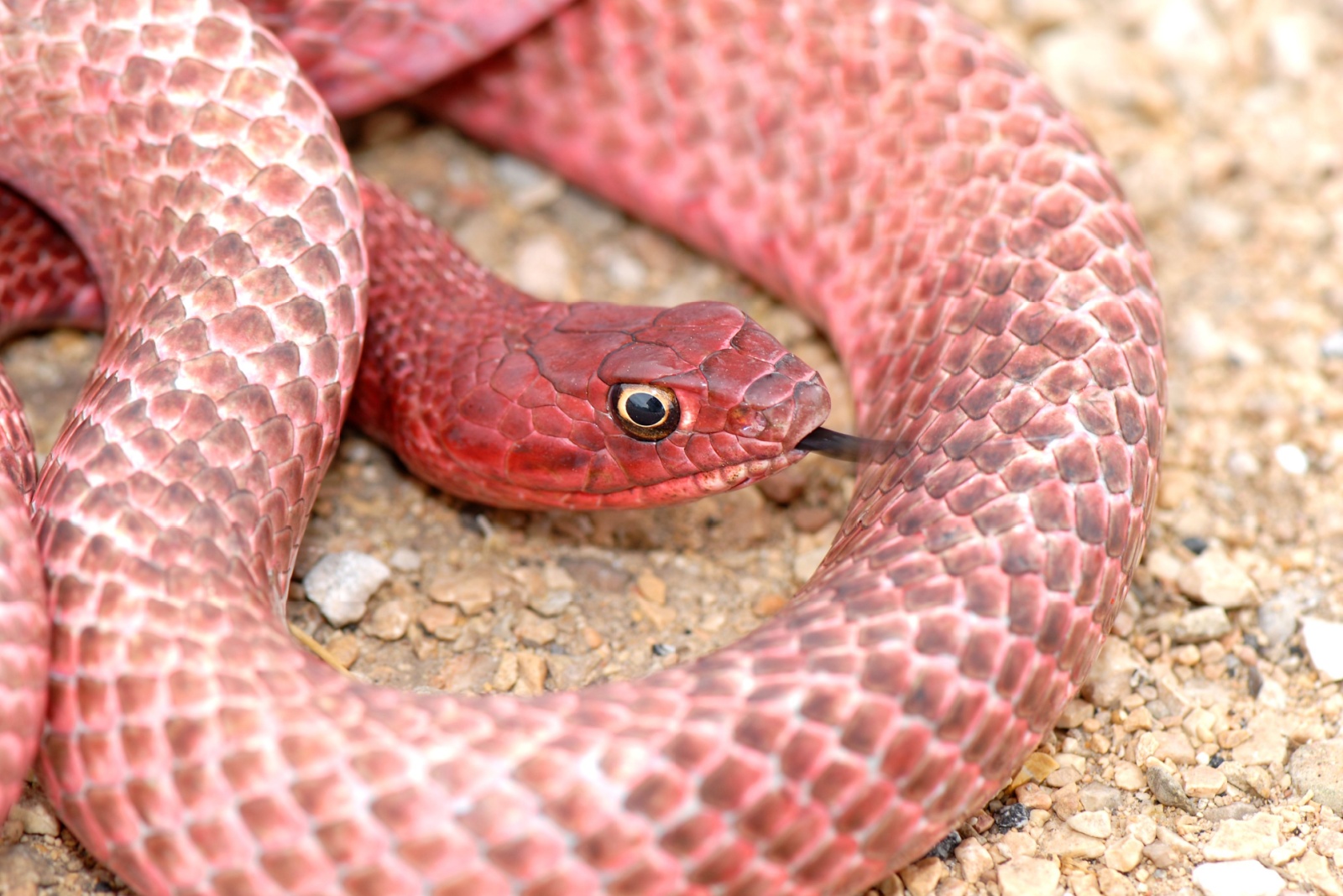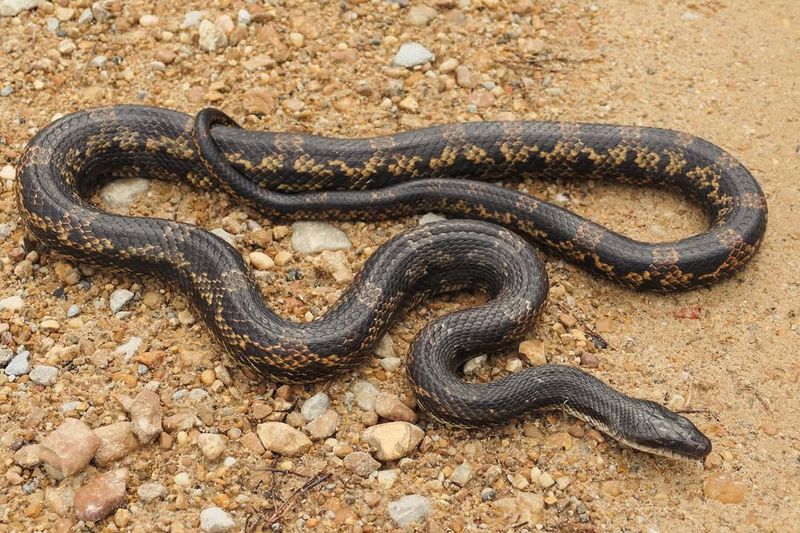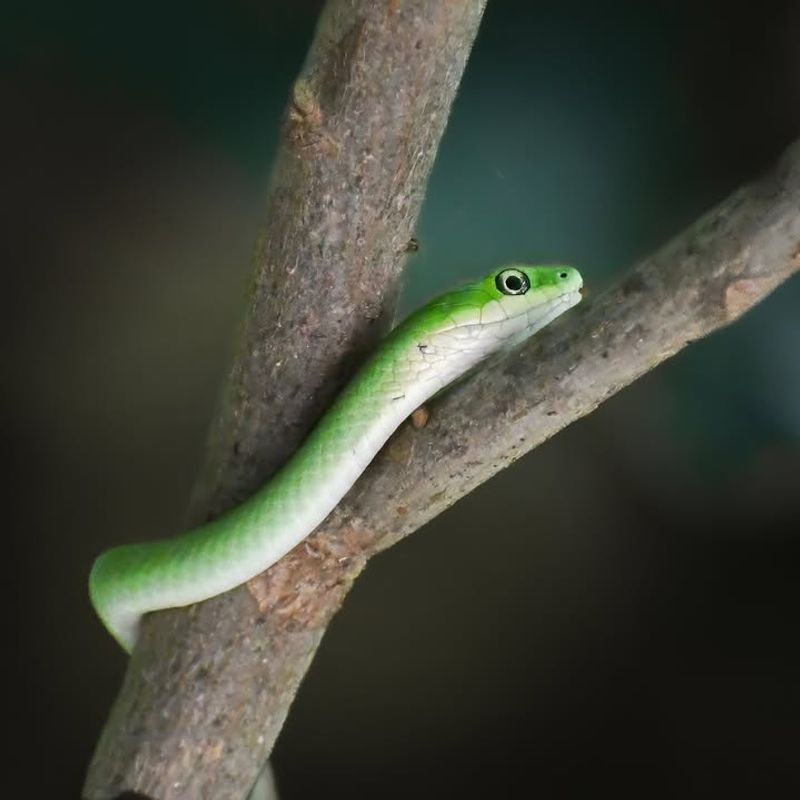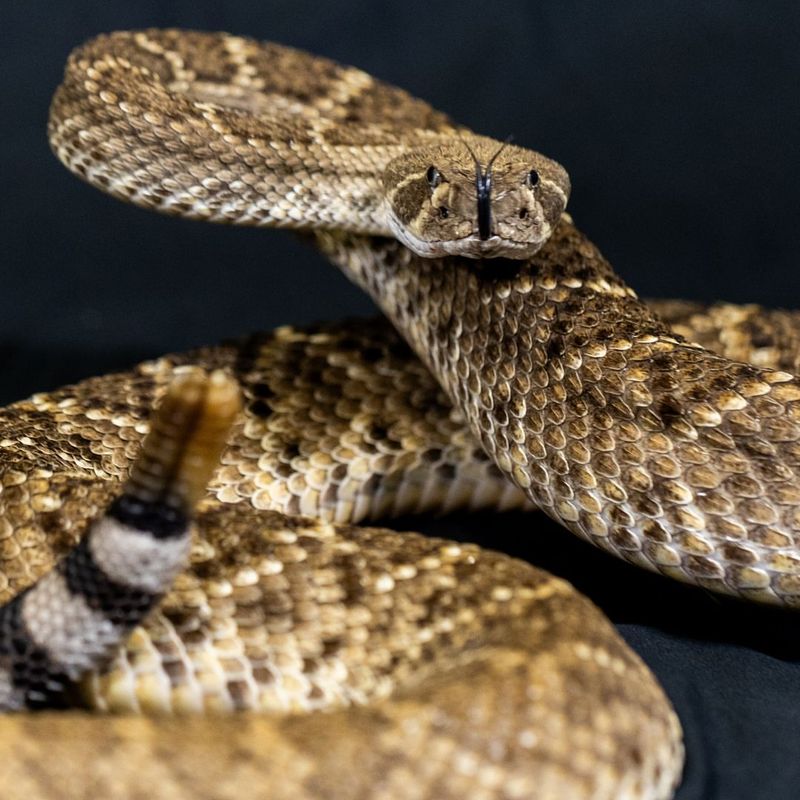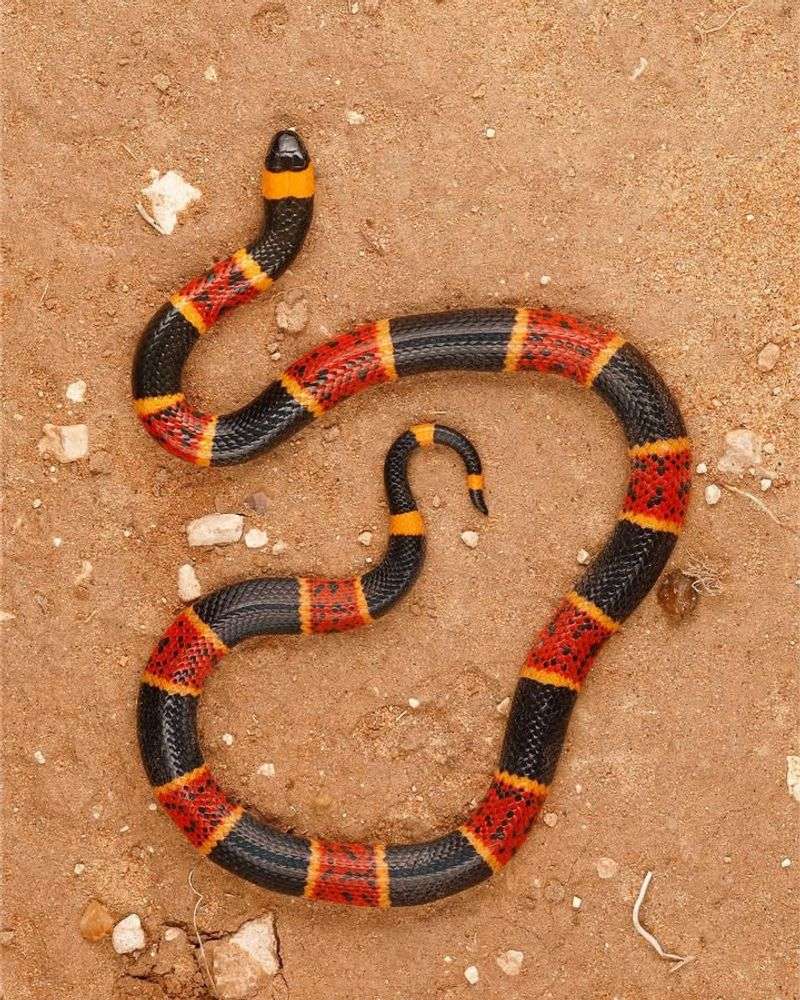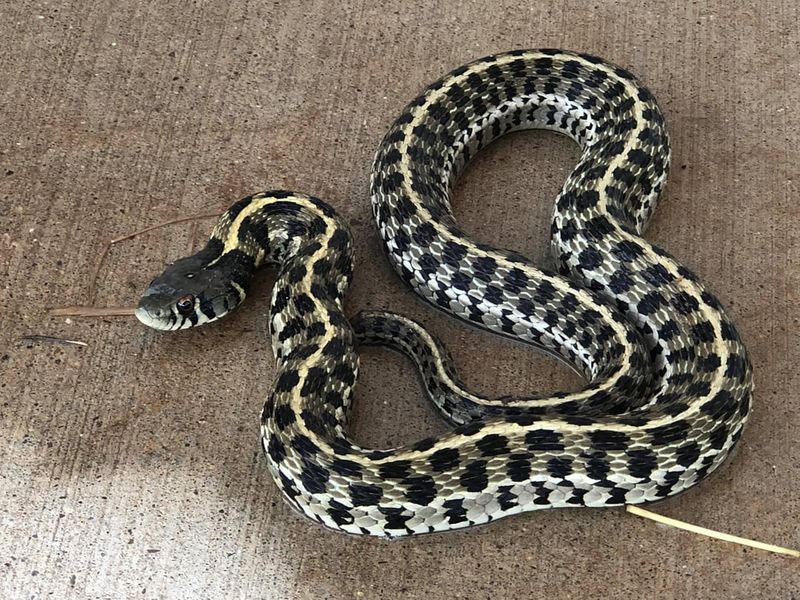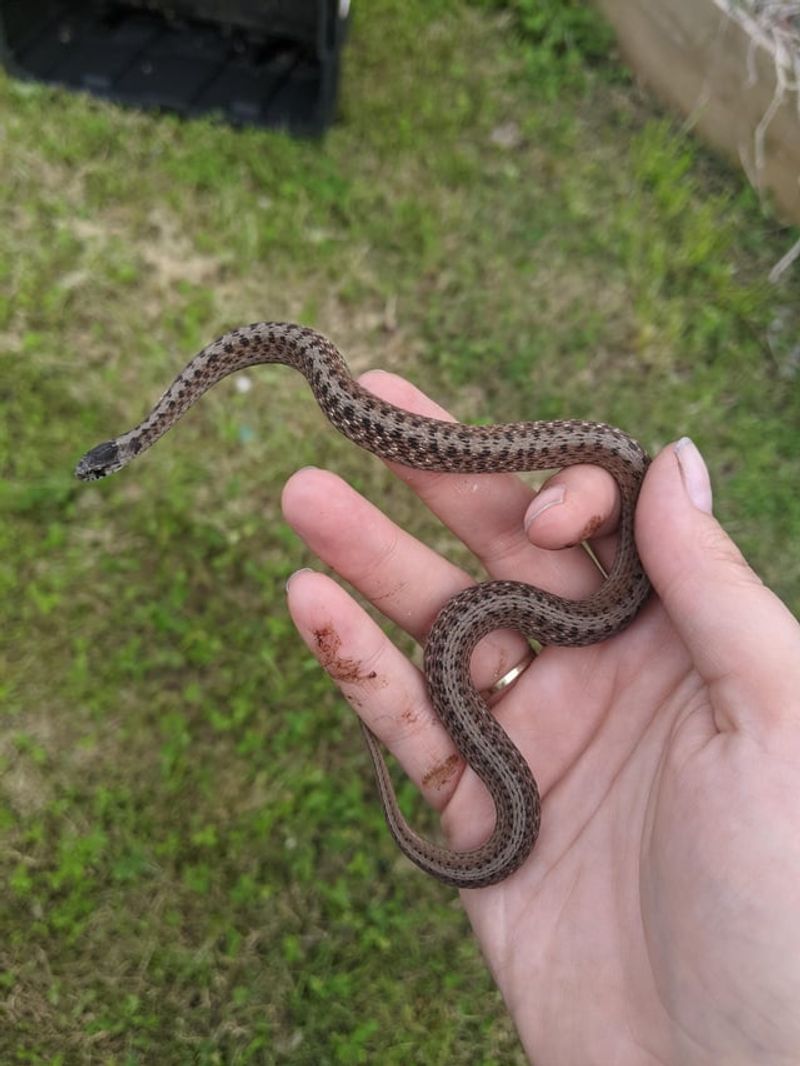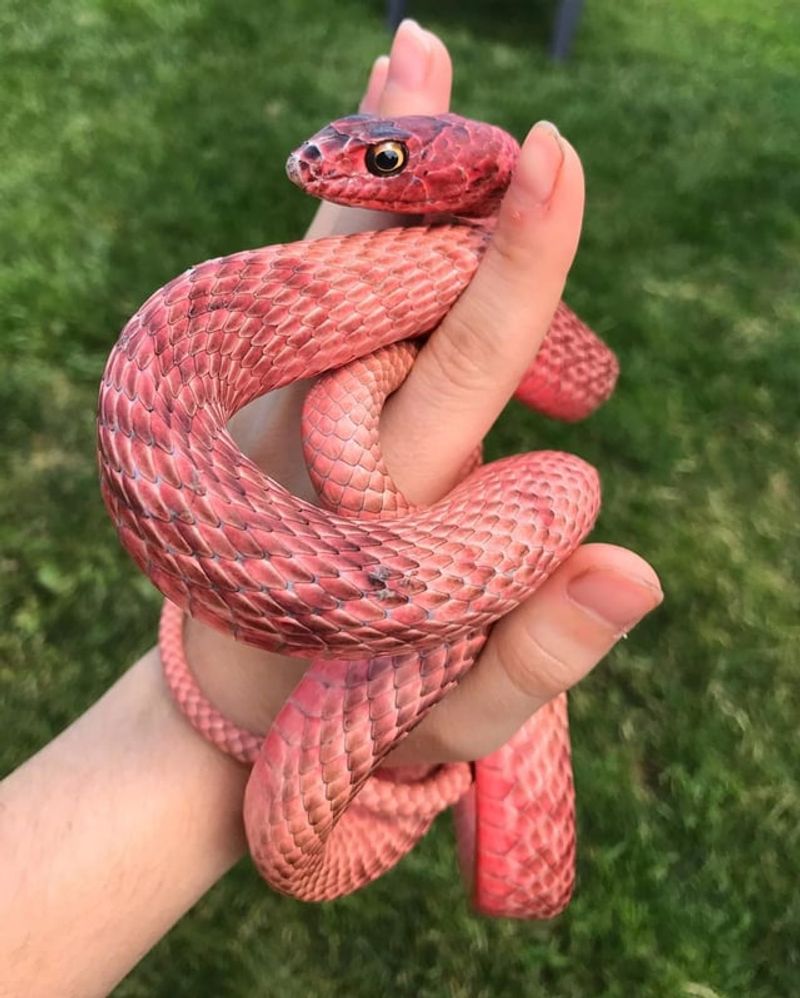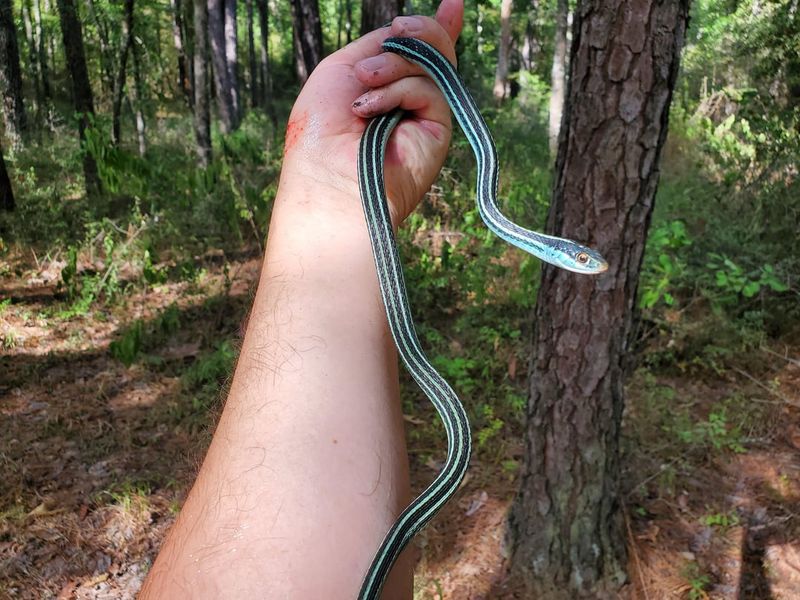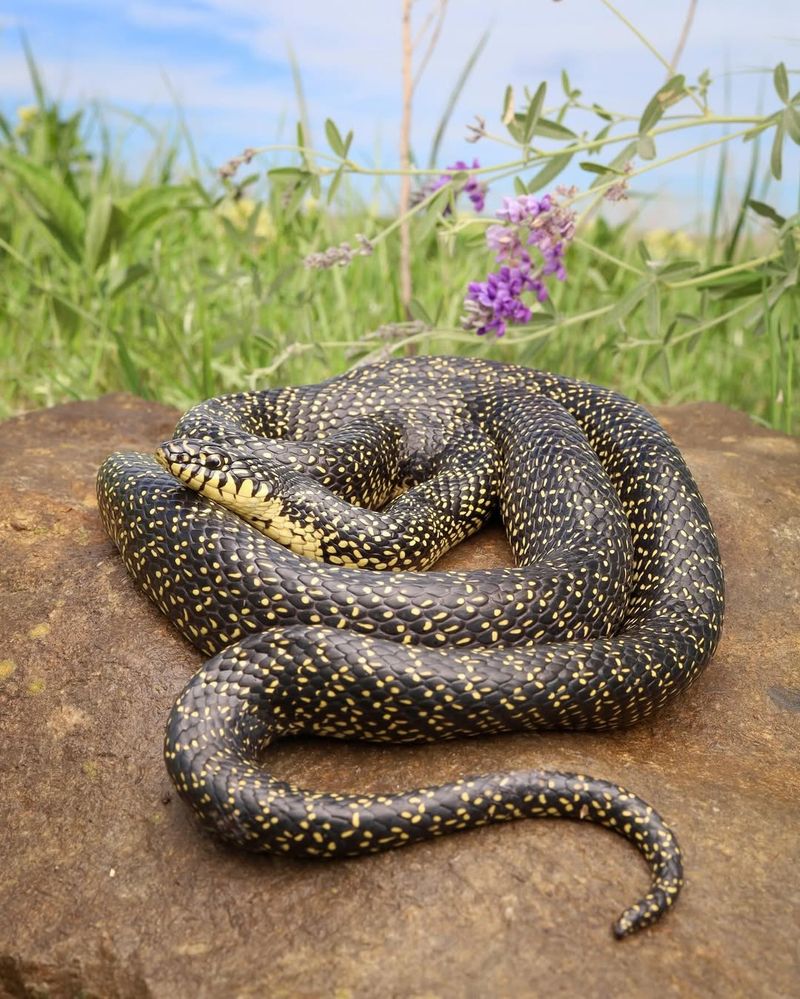Texas yards often hide surprises, and a rustle in the grass can send anyone’s pulse sky-high. Snakes claim a front-row seat in that mix, from harmless slitherers to species that spark real concern.
Some glide through flowerbeds, others slip under decks, and a few sun themselves right on the patio. A little insight turns anxiety into awareness, giving homeowners the upper hand as they spot telltale patterns and behaviors.
1. Texas Rat Snake
Often mistaken for something dangerous, this climbing expert actually helps homeowners by munching on rodents. Growing up to six feet long, they sport yellowish-brown bodies decorated with dark blotches that fade as they age.
You might spot one scaling your trees or hiding near your shed. Their climbing skills are impressive, allowing them to reach bird nests and roof areas.
Despite their intimidating size, they’re completely harmless to humans and pets. When threatened, they’ll vibrate their tails against leaves to mimic a rattlesnake’s warning.
2. Rough Green Snake
Like a living vine, this brilliant emerald beauty blends perfectly into garden foliage. Stretching about two to three feet long, they’re incredibly thin and delicate-looking.
Gardens with plenty of bushes and small trees attract these insect-eaters. They spend most of their time in branches, hunting spiders and caterpillars that damage your plants.
Completely docile, they rarely bite even when handled. Their shy nature means they’ll freeze when spotted, relying on camouflage rather than aggression for protection from predators and curious humans.
3. Western Diamondback Rattlesnake
Texas’s most famous venomous resident deserves serious respect and distance. Recognizable by the diamond-shaped patterns running down their backs and that unmistakable rattle, they’re built for survival.
Hot summer evenings bring them out hunting for rabbits and ground squirrels. They prefer rocky areas and brush piles where they can hide during scorching afternoons.
Never approach or attempt to kill one if spotted. Their venom is potent, but they’d rather escape than fight. Always watch where you step and keep yards clear of debris.
4. Texas Coral Snake
Red touches yellow, kills a fellow—this rhyme helps identify one of Texas’s most beautiful yet dangerous snakes. Their bright bands of red, yellow, and black create a stunning warning pattern.
Fortunately, they’re shy and spend most time underground or beneath leaf litter. Bites are extremely rare because they have small mouths and must chew to inject venom.
Morning gardeners should wear gloves when moving rocks or logs. If you encounter one, simply back away slowly and let it retreat peacefully into hiding.
5. Checkered Garter Snake
With a personality as friendly as a puppy, this common yard visitor rarely causes alarm. Light-colored stripes run down their olive or brown bodies, accented by a distinctive checkerboard pattern between the stripes.
Water sources attract them, so pools, ponds, and birdbaths become prime hunting grounds. They feast on earthworms, frogs, and small fish with impressive appetite.
Handling one might result in a musky smell they release for defense, but bites are uncommon. Kids often catch them safely, making them excellent teaching opportunities about wildlife.
6. Broad-Banded Copperhead
Named for their copper-penny colored heads, these venomous snakes wear hourglass-shaped bands across their bodies. They’re stocky and built for ambush hunting rather than chasing prey.
Leaf piles, woodpiles, and flower beds provide perfect hiding spots during the day. At night, they emerge to hunt mice, lizards, and large insects near your home’s foundation.
Their camouflage is so effective that people often step near them without noticing. Wear boots when doing yard work and use flashlights after dark to avoid surprises.
7. Texas Brown Snake
Barely longer than a pencil, this tiny snake often gets overlooked entirely. Plain brown coloring and a preference for staying hidden make them the neighborhood’s secret pest controllers.
Flower beds and vegetable gardens become their hunting territories for slugs, snails, and soft-bodied insects. They’re most active after rain when their prey emerges.
Completely harmless and beneficial, they have mouths too small to bite humans. Gardeners should celebrate finding them since they naturally control garden pests without chemicals or traps needed.
8. Western Coachwhip
Built like Olympic sprinters, these snakes can move at speeds up to four miles per hour. Their long, slender bodies range from tan to reddish and brown, sometimes with darker heads that fade to lighter tails.
Open yards with sparse vegetation suit them perfectly for their active hunting style. Unlike ambush predators, they actively chase down lizards, small rodents, and even other snakes.
Aggressive when cornered, they’ll strike repeatedly and bite defensively, though they lack venom. Their speed means encounters are usually brief as they race away from humans.
9. Gulf Coast Ribbon Snake
Sporting racing stripes down their sleek bodies, these water-loving snakes add grace to backyard ponds. Three bright yellow or white stripes contrast beautifully against their dark olive or black background color.
Any water feature becomes a magnet for these agile hunters. They patrol edges looking for small frogs, tadpoles, and minnows with lightning-quick strikes.
Extremely gentle and reluctant to bite, they prefer escape over confrontation. Their swimming ability is remarkable, and they can dive underwater to avoid threats or catch elusive prey items.
10. Speckled Kingsnake
Black as midnight with yellow or white speckles, these powerful constrictors are actually your yard’s bodyguards. They earned their royal name by preying on other snakes, including venomous species like copperheads and rattlesnakes.
Rock walls, compost piles, and storage areas provide ideal shelter. They’re active hunters that roam large territories searching for meals.
Finding one near your home is actually good news for safety. Their immunity to pit viper venom and appetite for dangerous snakes make them valuable neighbors worth protecting and appreciating.

